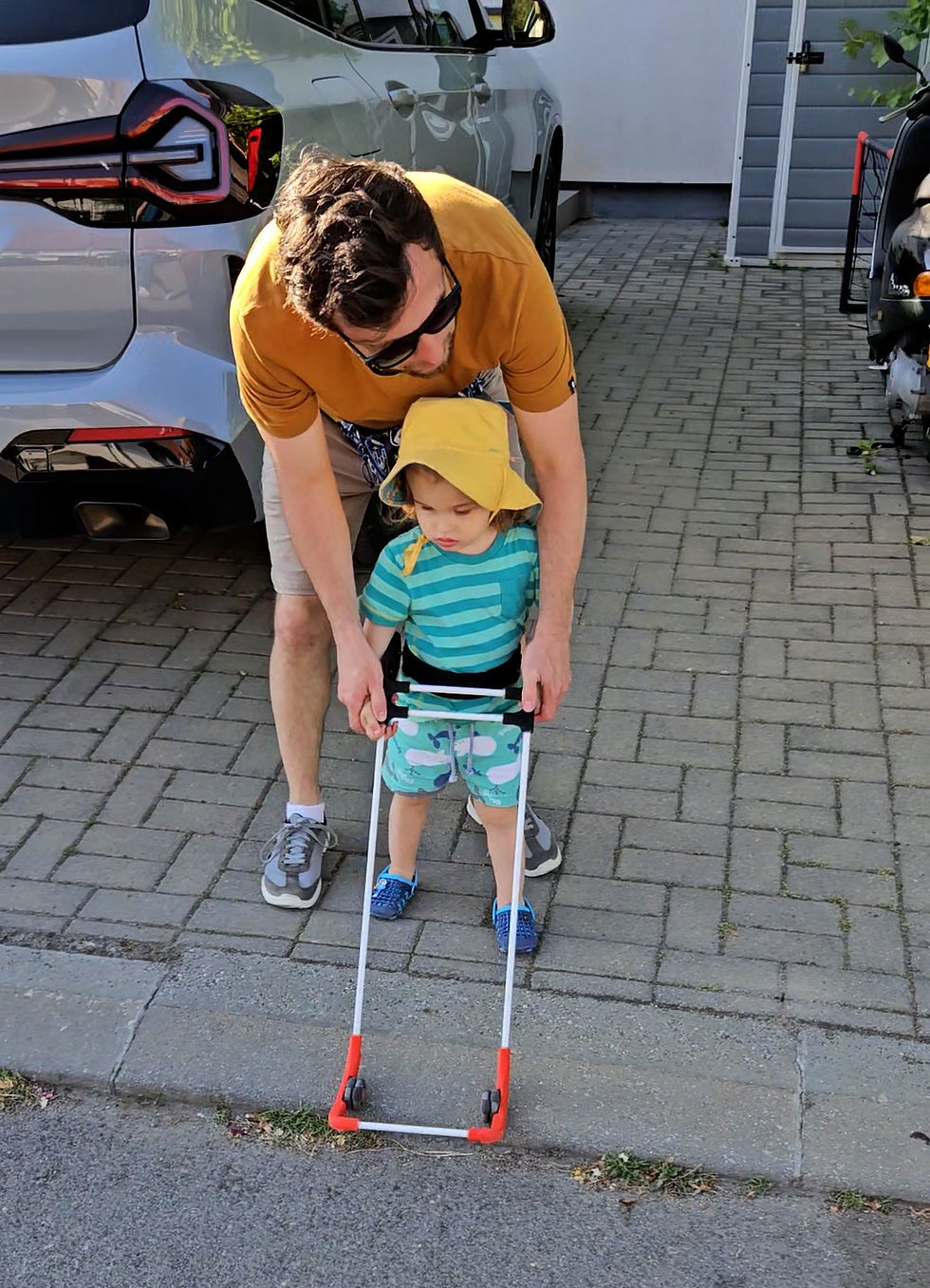Does the cane have a spot?
- Grace Ambrose-Zaken

- Feb 5, 2020
- 4 min read
Updated: Jun 16, 2024
There is sign at my dentist’s office that reads- only floss the teeth you want to keep – of course, I want to keep all my teeth – clearly I’m supposed to get the message that I need to floss all of them regularly or risk losing them. Belt, rectangle and rod cane usage has a similar adage, when your blind only use your cane when you don’t want to physically collide with objects or people you can’t see.

This is a picture of a plastic waste paper basket with a sign that says "park your canes here" and in the trash can is a rod cane. In a specialized school for the blind I visited, these baskets are located at the entrance of every classroom, they're the "spot for canes to live when the students were in the classroom".
The practice of not keeping the rod cane with the students in the classroom begs the question, do blind children need to use their canes in familiar places? Or asked another way, should children with mobility visual impairment or blindness (MVI/B) be able to memorize their familiar haunts and be able to navigate safely without their canes?
– no, children with MVI/B shouldn’t be expected to rely on memory to safely avoid collisions. It is the same for sighted people who also have places memorized and yet they keep the lights on all the time.
Recently an early education professional said that sometimes blind children just need to be freed from the belt cane so that they can explore their world without any cane barrier. Families have also told me that their blind toddlers prefer to interact with the world without their belt canes.
– but blindness is a barrier to safety and feeling unsafe is a barrier to learning.
There has long been a myth that suggests that blind babies enjoy bodily contact with the world, yet this simply hasn’t been supported by research of any kind. In fact, research suggests the opposite is true, the compounding impact of walking without being able to see obstacles before your body collides with them causes actual harm.
The negative impact that absence of effective path information has on learners with MVI/B is well-documented.
– but the results have been mislabeled.
Researchers have been seeking answers to the question why children with MVI/B fail to achieve motor, concepts, language, play and social skills when compared to sighted children? Yet none of the studies have considered unsafe ambulation as a factor in these developmental delays. For far too long, the myth of blind kids not minding unavoidable collisions has clouded all research on this topic.
The buck stops here on this crazy myth.
Children with MVI/B have no independent means to verify clear or blocked paths, smooth or rough surfaces, solid floor or drop-offs and when they independently ambulate under these unsafe conditions they develop a fear of walking (Rosen, 2010).
The fear of walking is real.
Children with MVI/B lack independent means to visually avoid obstacles. Therefore it is unsafe for them to walk and run freely. This feeling of being unsafe is what interrupts achievement of developmental outcomes. That is because, the human motivation to feel safe overrides all higher level needs, until you feel safe, you will not desire to learn new skills or meet new people (Maslow, 1943).
Children with MVI/B stop seeking others because they are unable to visually avoid collisions.
Anyone who thinks the belt cane is a barrier and not a liberator – is seeing the belt cane from the perspective of a sighted person. For a sighted person, having constant tactile path information would be awful.
For the blind baby, the belt cane is a liberator. For the child with MVI/B each snag, bang, and slide of the cane is welcome information. These tactile responses fill the void left by blindness. Children who are MVI/B enjoy tactile feedback because tactile feedback is vital to feeling safe.
Children with MVI/B wearing the belt cane have answers to important questions such as–
What is the surface of the path ahead? Is it grass, dirt, cement, tile, smooth, rough, cracked?
What is blocking my way? Is it heavy, light, moveable or stationary?
How deep is that drop-off? Is it a step, or more than a step’s depth?
The best way to understand the value of path preview is to miss it. To do that, turn off the lights and try to walk around in the dark. When you walk with the lights off, you walk more slowly and more carefully. You are also much more likely to stub a toe, bruise a shin, or trip over toys you thought were put away.
There is one difference between walking in the dark and walking while blind; sighted people can turn the lights on and change their safety with the flick of a switch. The only way for a blind person to see the path is to feel the path with a belt, rectangle or rod cane.
Sighted people always have the lights on at home, at school, at work and at play. For MVI/B people, it is better to walk around with the cane everywhere, including home, in the classroom, and on the sports field – it is always better to have the lights on and it is always better to have the cane lead the way because it is always better to walk with path information whether you’re sighted or blind.








Comments